Robots, Evolution, and the Future of the Human Race: What Webcomics Have to Say About Transhumanism
 There was a time I thought listening to talk radio was for old people. I do a lot of carpools, and typically someone will have the radio turned to either the news or boring old NPR. This would annoy me tremendously. Why are you listening to someone drone on when you could be blasting some Major Lazer, dude?
There was a time I thought listening to talk radio was for old people. I do a lot of carpools, and typically someone will have the radio turned to either the news or boring old NPR. This would annoy me tremendously. Why are you listening to someone drone on when you could be blasting some Major Lazer, dude?
Perhaps it’s a sign of my age, or perhaps it is my diminishing tolerance for tunes that have lyrics in them, but I found that I’ve been listening to a lot of talk radio myself lately. Only, not in the form of actual radio waves captured by the car antenna. I’m talking podcasts. Whether it’s the McElroy Boys playing Dungeons & Dragons in The Adventure Zone or Dan, Elliott, and Stuart jawing about movies on The Flophouse Podcast, my days are spent with people I can pretend are my much smarter imaginary friends having scintillating conversations. Is that the true appeal of talk radio?
One such podcast, Stuff They Don’t Want You To Know, recently veered off into a topic I hadn’t expected. I tune into a podcast with that name for paranoid conspiracy theories, dammit! Instead, the hosts began speculating about transhumanism. It’s a topic that seems to have been brewing in the background of several previous shows. One episode talked about how technology has basically given us psychic powers: what is social media, after all, but a form of telepathy, where your privy to the innermost thoughts of your friends online? Shoot, you out there on the internet somehow know all my thoughts about webcomics at this very moment! The acceleration of technology has connected us closer than ever before, to the point where online marketers know exactly what they need to sell to you with only a few points of data.
Which brings us to transhumanism, i.e. the theory that the human race can evolve beyond its current physical and mental limitations. One podcast episode began discussing, at length, about the potential for space travel. As you do. The consensus with the hosts was that any form of travel beyond our solar system was physically impossible. However, one host began talking about what composes the human body. We are just a bunch of tiny living organisms — cells — that come together to form a thinking, living being. Our tiny cells probably go about their day, eating and reproducing, without any notion that they are part of a larger organism.
Nothing new, incidentally. I had to read a book in high school, The Lives of a Cell, that makes the same observations, and it was first published in 1974. Being a small organism caught up in the collected consciousness of a larger creation was a part of 1969’s Galactic Pot Healer as well (written by sci-fi legend, Philip K. Dick).
So here’s the big question: what if we’re not the final stage in evolution? What if, as the host coined, we’re just the midwife to an organism that can, in fact, traverse the stars? And what if that organism is the collective intelligence of all humanity, bringing things to the next level that we tiny cells will never see? The Lives of a Cell theorized that the bigger organism would be the planet itself… but a planet isn’t mobile. What if that organism is a robot, one that can travel the stars and move beyond our fleshy confines? Should we be terrified? Or should we rejoice?
THE webcomic about transhumanism is probably Aaron Diaz’s Dresden Codak (reviewed here). In the “Hob” storyline (which is at this point 8 years old), protagonist Kimiko Ross is willing to let the world burn so she can give birth to a machine consciousness, which she believes is a necessary next step in evolution. Ross gets visited by time travelers who try to warn her and her friends off this future. They’re portrayed, though, as perpetrating an obsolete system: obstructionists in a glorious future that will free humanity from its suffering (symbolized by Kimiko’s angst over her dead mother, which I’m assuming would have been averted if she was some sort of immortal cyborg).
Diaz connects transhumanism to religion through visual symbolism. The robot Hob is seen as a tall, lanky angel. Kimiko transforms into a giant, shimmering goddess. The original form of “The Mother” looks like some sort of Ouroboros snake or Midgard serpent at Ragnarok. And … something that looks like it came out of Final Fantasy. Maybe its an Aztec thing. Transhumanism, in Dresden Codak, is one more step on the path toward Nirvana. The storyline culminates in an event similar to the end of the anime RahXephon, where the old world is disassembled and reformed into something that’s familiar, but better.
Which basically means we see Kimiko again, but with a cyborg arm that looks like the telescoping tripod I use for my DSLR. I’m assuming this means that humanity has reached the next stage of evolution, with new bodies that now have durable roboparts.
Or maybe it’s just Kimiko? I have no idea. I really didn’t like Dresden Codak all the much, partly because for a webcomic with such a lofty message, the panel layout is really confusing. You’re supposed to make a lot of assumptions for the high concept ideas, but less important character beats — such as Kimiko’s childhood — get extended narratives. Post-“Hob” is some sort of BioShock inspired world, though, so I’m going to assume everything changed. (There’s also a strong religious element to the Dark Science world, retaining the link between transhumanism and beliefs.)
So is this what a transhumanist future would look like? Humans with robotic parts? Why? Why would a machine consciousness choose to continue onward to the future using inferior flesh for bodies? Realistically, if transhumanism means an evolution toward a form that would transcend our earth-bound limitations, then scavenging bodies with weaknesses toward solar radiation and lack of oxygen is likely the wrong call.
The time travelers mentioned that they had to wipe out “The Mother” and her robotic minions to ensure their own survival past their obsolescence. Is that why the machine consciousness took human form… to ensure its own survival from a human uprising? How is this in service to the next stage of human evolution, especially since Kimiko is still portrayed as an awkward, very human dork at both the beginning and end of the arc?
I’m not discounting the idea, by the way, that Diaz just prefers to draw human beings, and letting his main character retain human form was just more enjoyable to draw.
Honestly, though, the first thing that came to mind when listening to the transhumanism podcast was Kit Roebuck’s Nine Planets Without Intelligent Life (reviewed here). Here’s a world that a direct look into one that has already evolved past humans. They’ve died off long ago, and are only remembered imperfectly in museums. The robots, with their far more durable and ageless bodies, can now populate every single planet, turning them into financial centers and vacation resorts. They, not humans, meet life on other planets. Despite having a wider galaxy to explore, though, things quickly become routine.
Nine Planets is more a metaphor to how we are now. Humans represent previous generations, as recent as even the ones that grew up in the ’40’s through ’60’s. “Man’s extinction was not unpleasant,” the comic explains. “Human beings merely prefered to copulate with robots specifically designed for the task than to procreate with other flawed humans.” OK, so… my analogy isn’t that perfect. The end of the human race here lines up with the space-faring folk you see in the movie Wall-E, and how a sedentary lifestyle was a comfortable doom for an entire race. Yet I also see parallels in aging. The images that Roebuck chooses, with humans sitting on a couch and a rather overweight one being serviced in a bed, are reminiscent of retirement communities. It’s a comfortable end to an older generation that eventually cedes control of the world to their far more advanced successors (in this case, robots).
Progress and evolution are inseparable. Our generation evolved beyond the past ones — we’re more interconnected in the digital world, asked to learn more complex theories and shoulder greater responsibilities than ancestors who had been farmers, soldiers, and shopkeepers. At the same time… we’re not that different. We can look back at how primitive and backwards our grandparents were, but we too are becoming obsolete… just as Chris and Ben discover at the beginning.
Rather than frame transhumanism as a necessary step, as Dresden Codak does, Nine Planets sees it as an inevitable one. The robots aren’t strange unknowable aliens. They’re us. They’re no better nor worse at being humans. The universe may be infinite, but exploring its boundaries need that spark of curiosity. The comic ends with the characters returning to their normal lives except for Chris, who wants to go one to see what’s on the other side of that rise. What he sees is a field of stars.
Have robots, at this point, reached the end of their own evolutionary usefulness? Our robots protagonists, while comfortable, mostly live out their lives in a holding pattern, trapped in a routine of their own devising. To go even further, perhaps there needs to be a trans-transhumanist stage. The next stage.
Speculation can all sound silly, I know. But just think of the advances that have been going on in the past couple of years. A computers beats two Jeopardy! champions in a trivia competition, and we brush it off as inevitable. While imperfect, questions asked to a cellphone can tap into logical processors that can give you a reasonably
The entire technology about “the internet of things” has been described as giving feelings to things that have never had feelings before. A simple chip in a plastic card is a primitive neuron. Online stores have been given the ability to remember you and your preferences. Think about self-driving cars. We are giving vehicles the ability to be aware of their surroundings just to give point A to point B. We have given them intelligence… and it’s not a reach that some day these intelligent cars will be better than human drivers. Machine consciousness, a concept that was once the most far-fetched of science fiction, seems closer now than ever. We may see a sentient AI before we die.
So, in other words… the comic that best encapsulates the theories behind transhumanism is clearly IDW’s Transformers.
Posted on October 19, 2016, in sci-fi webcomic, webcomics and tagged transhumanism. Bookmark the permalink. 2 Comments.






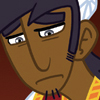









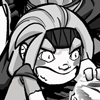


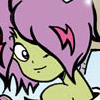




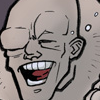











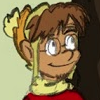




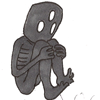





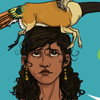





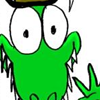


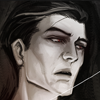





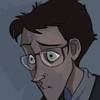














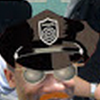


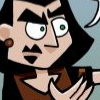


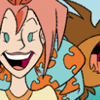








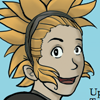











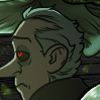


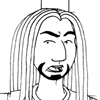


I’ve never really considered Dresden Codak a transhumanist comic. Its transhumanist themes stem from around the time that the singularity was a hip and in thing in science fiction. But the comic isn’t really about them. It is about Kimiko, the author’s luscious lust object and mouthpiece. It’s about her experiences, her thoughts, and occasionally some jokes about science. I think. I haven’t read the comic in ages, I have to admit. But it never struck me as direct commentary on transhumanism. It’s simply not a theme in the comic, and more of an object in the background. Overall I find the writing of Dresden Codak to be a little muddled.
Neither would I say that NPWIL is a transhumanist comic. There’s a clear atmosphere in the comic that humans are gone, and while robots are their successors, they are also a new and different thing rather than a direct continuation. It reminds me of Charles Stross’ novel Saturn’s Children, which is also about human-like robots inhabiting the solar system. And Charles Stross is not a transhumanist. In fact, he might very well be the opposite. The man fills page upon page with diatribe about how manned space exploration is impossible and how the singularity would mean the end of human life, and therefor everyone who wants it to happen is an idiot. A very antagonistic individual, that Stross.
Of course, I wouldn’t be able to point you in the direction of a proper transhumanist webcomic. In my experience they simply do not exist. Hell, you might have more luck with furry comics, if we’re defining transhumanism as “more than human”.
Ah, Dresden Codak… it approaches transhumanism in the same way many people approach quantum physics, taking it as a staring scientific framework and then segueing into esoterism and magic to fill in the blanks.
I kind of like Dresden Codak, although it is indeed a hard read. And I have once also wondered about Diaz’s tendency of creating “perfect robotic bodies” that are uncannily human like. One would think a perfect body would at least have a few more legs for better stability, but that`s another can of worms.
As far as TH goes, I would LOVE to see something in the vein of Dougal Dixon’s “Man After Man”. Humanity goes beyond itself, by making itself different in order to repopulate Earth’s biomes. It’s fascinatingly grotesque, yes.